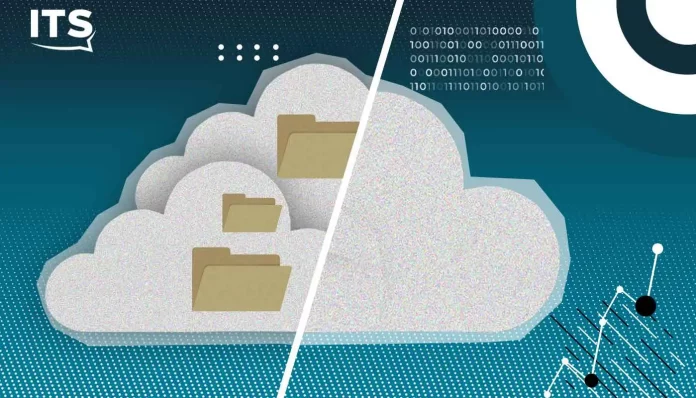

In an ideal world, the company that has achieved digital transformation is one that has managed to align a number of factors, combining both technology and organizational and people changes. In this transformational plan, the cloud occupies a central place and acts as a catalyst, offering unusual flexibility in the IT world in the era of perpetual licenses.
In fact, the cloud is much more than just a technology or a set of services; it represents an essential strategic lever for digital transformation and business agility. It represents the transition from a traditional IT model, often rigid and expensive, to a more flexible, scalable and innovation-oriented model.
The sixth annual edition of Nutanix’s Enterprise Cloud Index highlights how businesses across the globe are embracing cloud technology, adapting their strategies to stay competitive in a digital era disrupted by AI and technology. ‘Analytics, and the resulting organizational and IT developments.
Hybrid and multi-cloud infrastructures have established themselves
According to the study, the deployment of hybrid and multicloud infrastructures has become essential for two main reasons: to have the environment best suited to its needs, by mixing on-premises, cloud and edge computing, and optimizing the management of their applications and data. In the first case, 90% of respondents adopt an infrastructure strategy optimizing the most suitable environment, on-premises or in the cloud, for each of their applications.This method, which has become the majority, explains why hybrid and multicloud environments have established themselves as default standards. Additionally, more than 80% of organizations consider hybrid environments to be the most beneficial for managing their applications and data. Even more importantly, it’s becoming a priority for executives, with nearly half indicating that implementing hybrid IT is a top priority for their CIO.
The challenges of moving applications and data
In their quest to balance security and innovation, organizations face a complex challenge when it comes to moving applications and data. This mobility, costly on the one hand and risky on the other, explains why enterprise workloads — applications and data — often orient themselves towards the IT environment best suited to their needs, whether it is a on-premises data center, the cloud, an edge location, or a combination of these environments.This diversity in application placement explains why 95% of organizations report having moved applications from one environment to another in the past year, with security and innovation being the main drivers of these moves. Businesses should expect the movement of applications and data to remain constant and plan their infrastructure choices accordingly, prioritizing flexibility and visibility. Currently, organizations face significant obstacles in completing complex application migrations, with 35% of ECI respondents finding migrating workloads and applications a major challenge given their current IT infrastructure.
Cybersecurity, spending continues to increase
In terms of cybersecurity, protection against ransomware is as much a concern for managers as it is for CIOs. Ransomware and malware attacks continue to pose an existential threat to modern businesses, with an ongoing battle between malicious actors and enterprise security professionals. However, the report states, “Data protection and recovery remains problematic, with 71% of respondents who suffered a ransomware attack reporting that it took days or even weeks to restore normal operations”. To address this, 78% of organizations plan to increase their investments in ransomware protection solutions this year.Furthermore, companies have taken stock of the repercussions of CSR strategies. They don’t just plan their sustainability programs, they actively implement them, starting with IT modernization. No less than 88% of respondents confirm that sustainability is a priority for their organization. Unlike the previous report where actions were limited, many organizations report taking active steps to implement sustainability initiatives, with IT infrastructure modernization being the most common. This remarkable result demonstrates the direct impact of IT infrastructure on sustainability. Looking at regional trends, we also see that implementing remote work to support sustainability is a priority in EMEA and APJ, while it ranks only fifth in the Americas.
Link data from different environments
Infrastructure modernization is becoming imperative, driven by AI, modern applications and data growth. ECI respondents identified increasing investment to support AI strategy as their number one priority, followed closely by investment in IT modernization. Additionally, 37% of ECI respondents report that running AI applications on their current IT infrastructure will present a “significant challenge.”“To overcome this challenge, we expect organizations to prioritize IT modernization and deployment of edge infrastructure, which can facilitate faster processing and access to data,” say the report writers ». This will in turn improve their ability to link data from multiple environments for better visibility of data location across their extended ecosystems.

Author Bio
A connoisseur of the digital marketplace and a master of the written word, this 30-year-old English expert brings to the table a wealth of knowledge rooted in the sale of digital products and a passion for blogging that resonates with an audience seeking expertise and insight in the online realm.
Their insights are drawn from hands-on experience navigating the intricacies of e-commerce and content creation—leading the forefront of digital innovation and communication. Whether it’s breaking down complex marketing strategies or sharing tips on how to captivate an online audience, their work stands as a testament to a career built upon successful digital engagement and savvy business acumen.
Stay tuned to absorb compelling content from a voice that not only understands the digital landscape but also shapes its future through every blog post and digital strategy.
